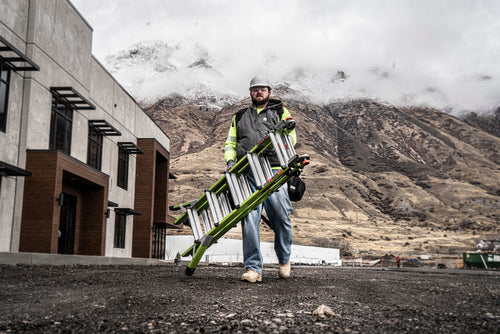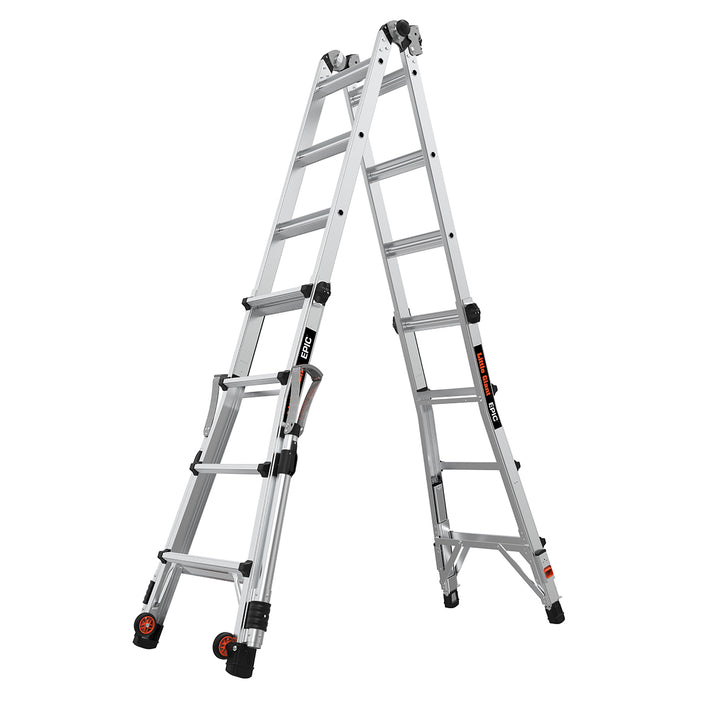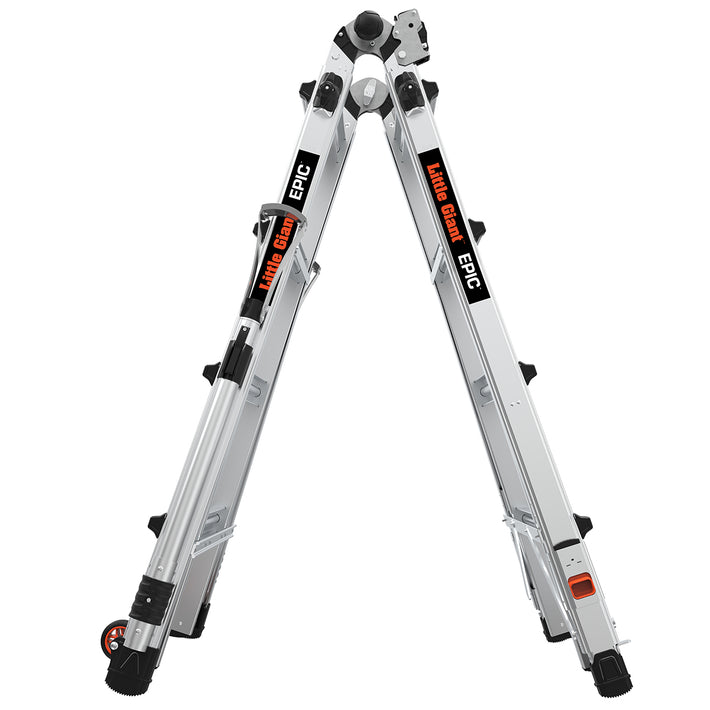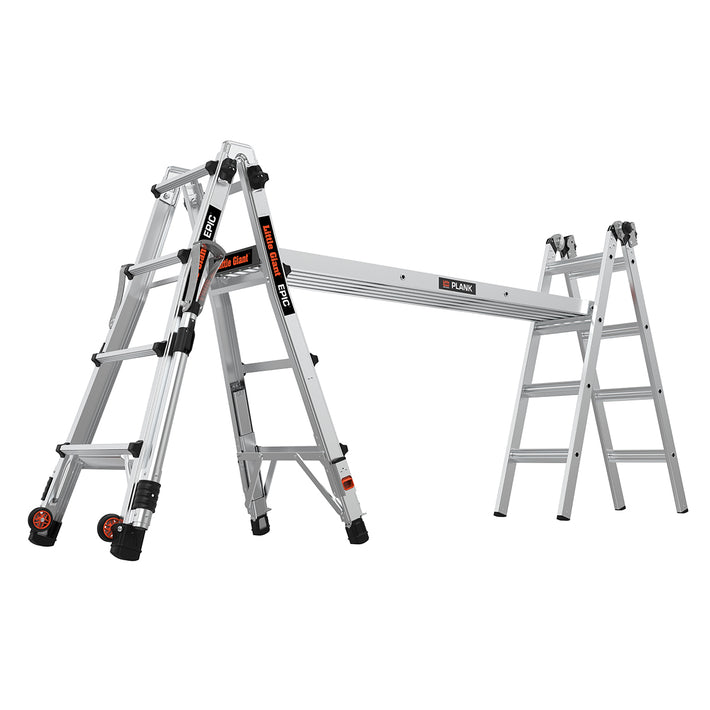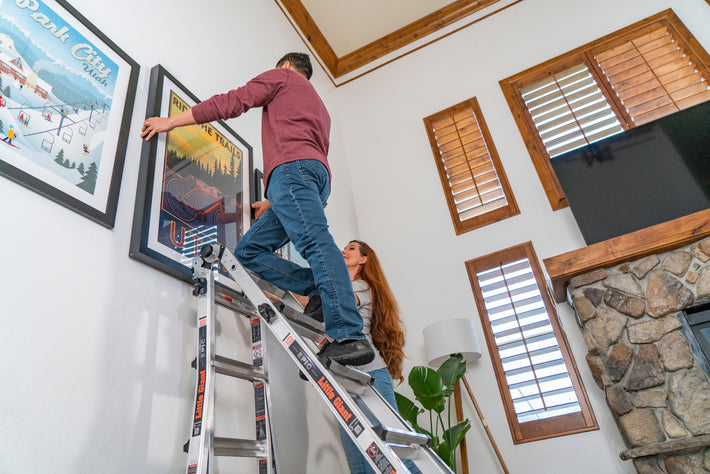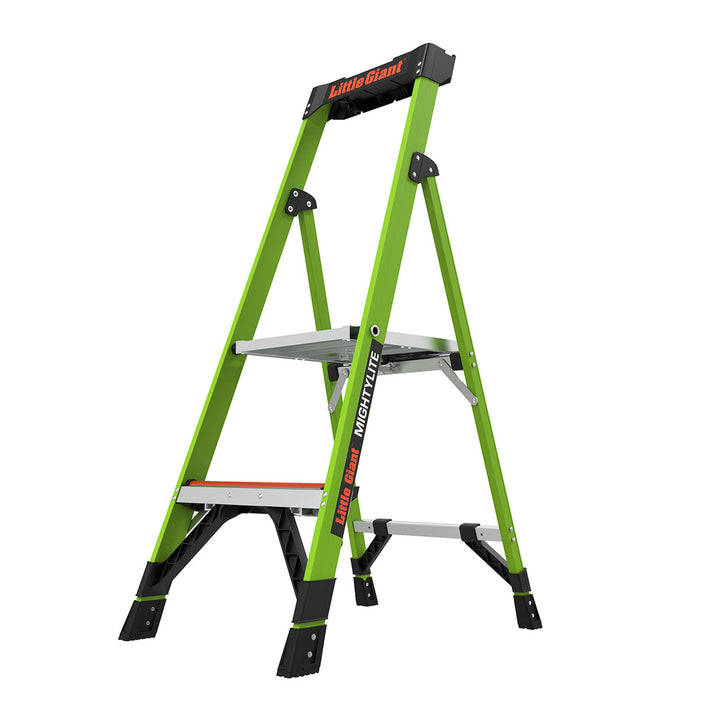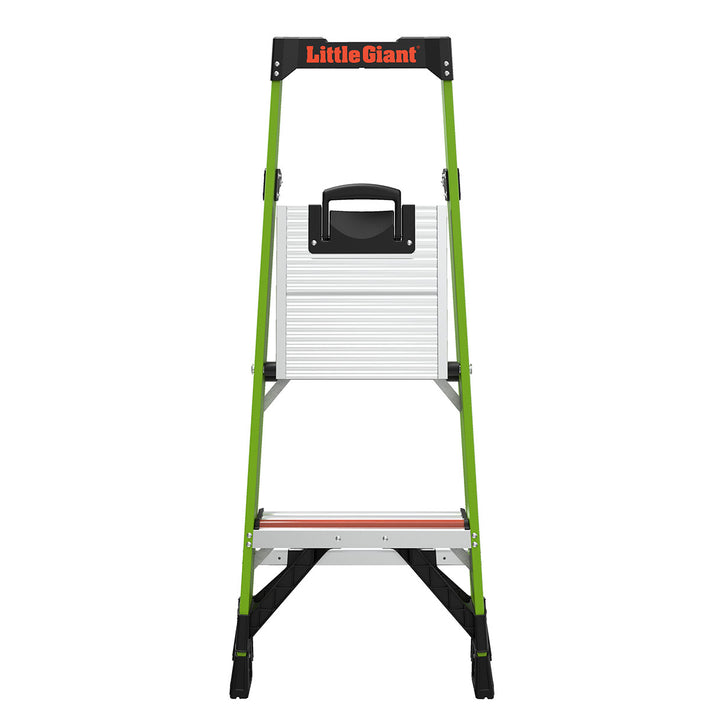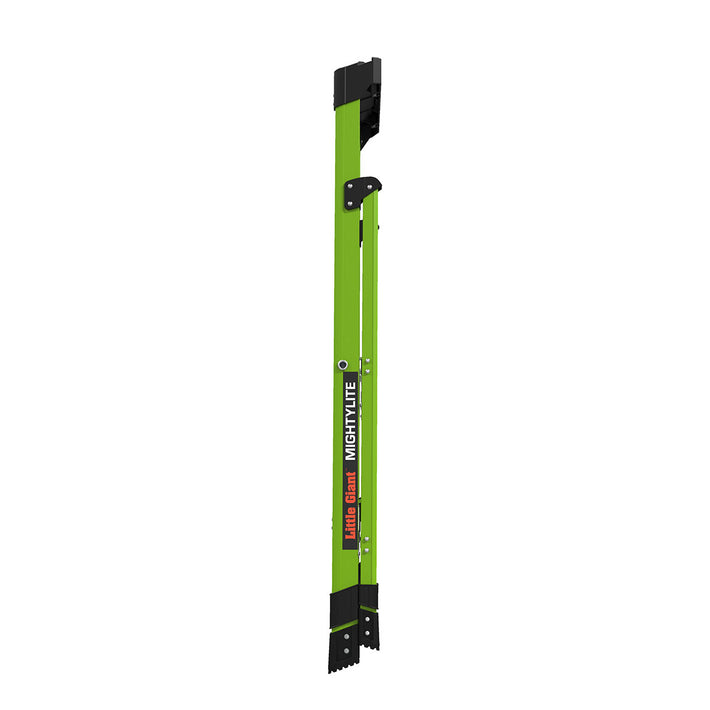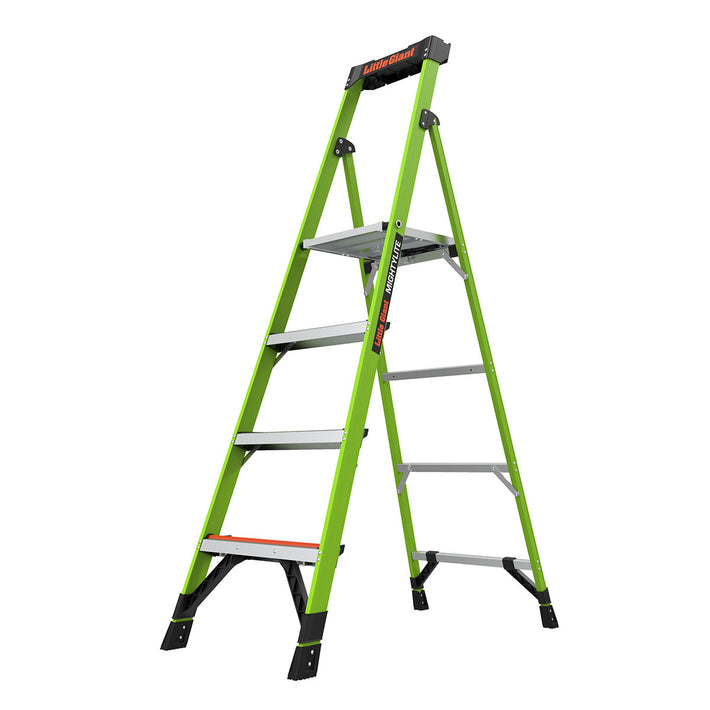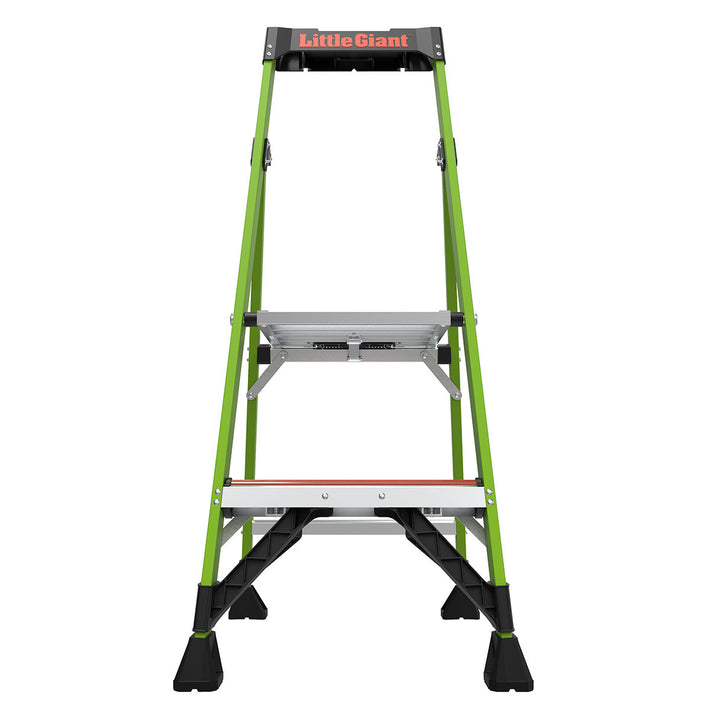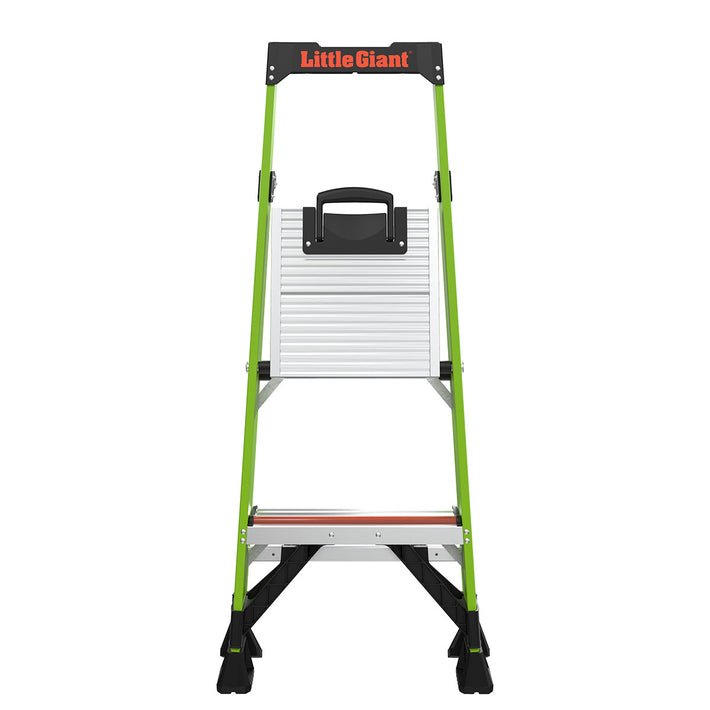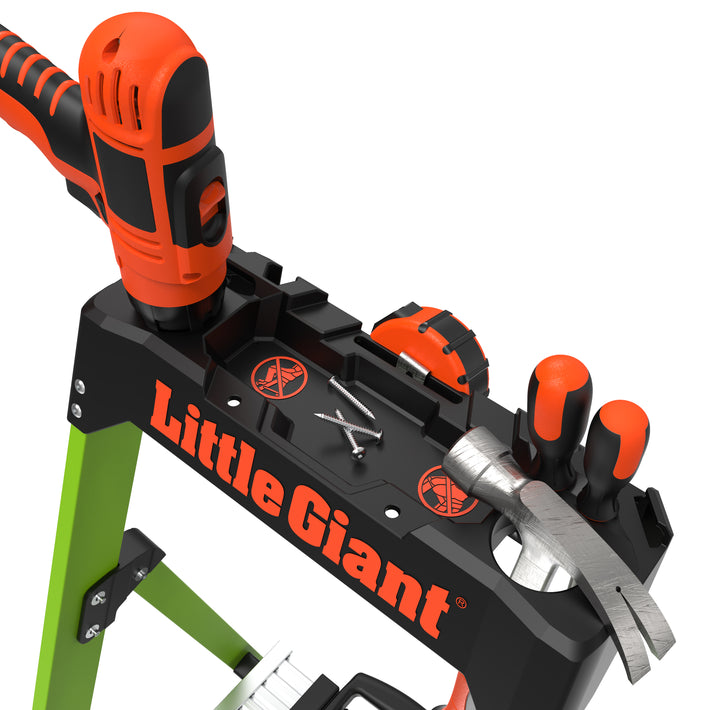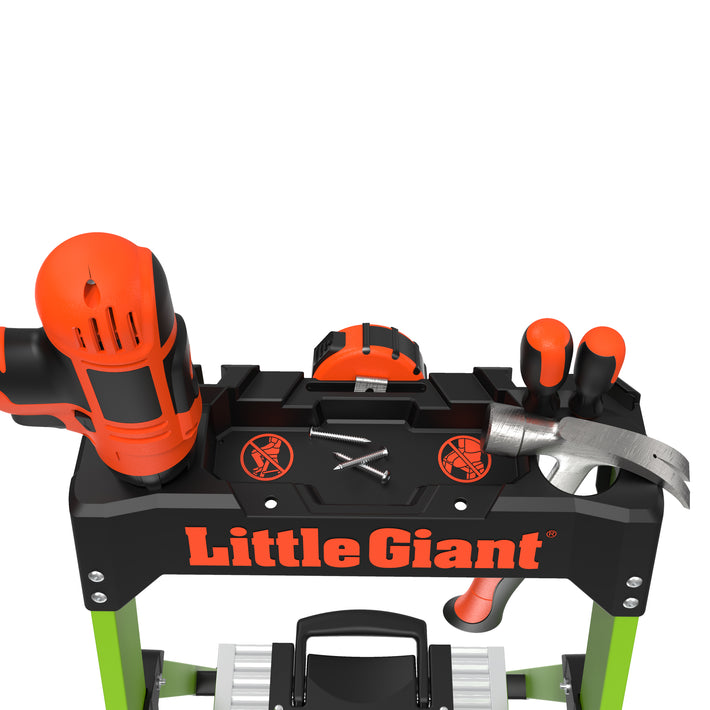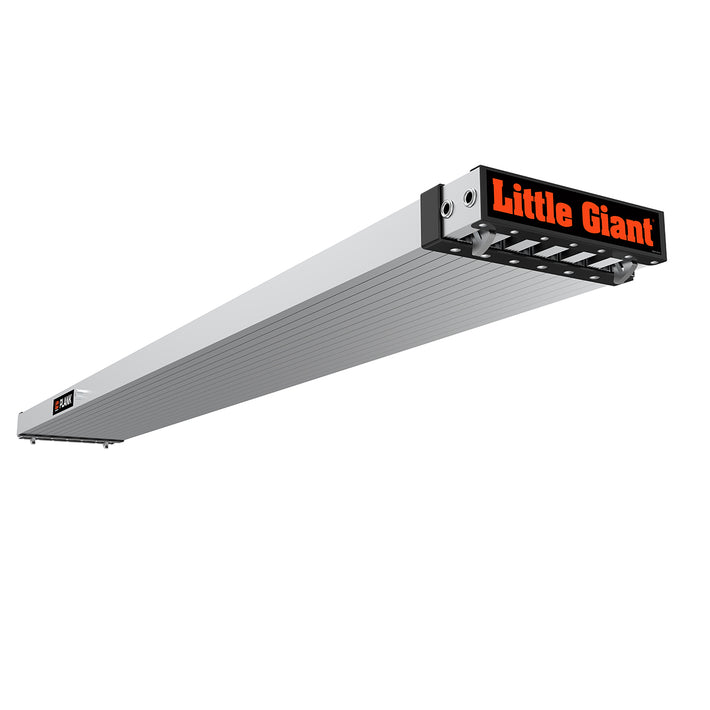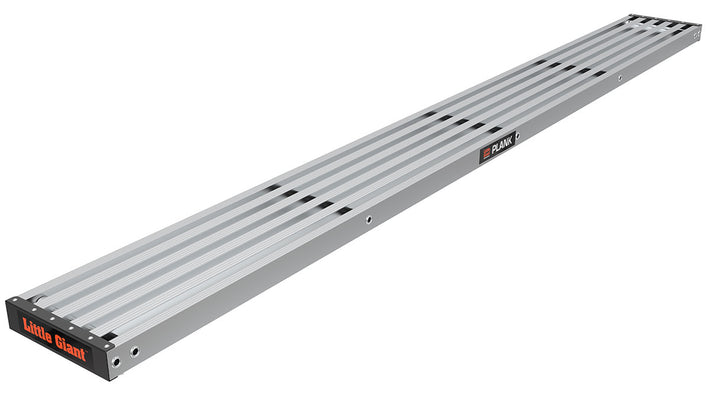Top 5 Tips to Safely Hang Lights for the Holidays
Ladder Safety for the Holidays
It’s that time of year again. As the air gets crisp and the leaves begin to crunch, it’s a sure sign the holidays are quickly approaching. For many, this time of year is when we start contemplating our holiday décor.
Every year, we get questions from our customers about holiday decorations. People often ask, “What ladder should I use to decorate my house?” or, “How do I safely hang lights on my home for Christmas?” So, this year, we decided to take your questions to the pros. The Little Giant Ladder Systems® team spoke with RMC Property Services, located in Utah County, Utah, about the best ways to hang lights for the holidays.
Richard Cummins and Ryan Lemon run RMC Property Services. With their skilled crew, RMC hangs lights on over 400 homes and businesses in the region. Each house gets custom-cut lights specifically designed to fit each customer's home, based on size and style preference. As we spoke with Richard and Ryan, we watched their crew masterfully hang lights on a residence in a fraction of the time it would take the average person to decorate. Upon talking to Richard and Ryan, they had five top tips on how to safely hang lights for the holidays.

Top 5 Tips to Hang Lights
- Start with a plan
- Use the right equipment
- Timing is everything
- Know your limits
- More isn’t always better
1. Start with a Plan
Benjamin Franklin once said, “If you fail to plan, you plan to fail.” While this concept is usually brought up in terms of business, it’s also poignant in most aspects of life. As you go into the holiday season, planning will save you a great deal of frustration. Think of the following:
- Your Theme
- Style of Lights
- The Size of House
- Your Timeline
Your Theme
Determine from the start what your theme is. Will your house be a “fun” house or a “classic” house? Eclectic or upscale? It doesn’t matter which theme you decide, but making a plan will help you choose your decorations.
Ryan at RMC said, “I think one of the things I see frequently is that people don’t have a plan in mind when they start decorating. So, it ends up becoming a conglomeration of things that don’t match. So, you have something that looks nice and classy, right next to a cartoon figure, next to a nativity scene, and the result is just an odd combination.”

Style of Lights
Alongside the idea of sticking to a theme, consider what kind of lights you will be using. Are you using LED lights or incandescent bulbs? Cool-toned or warm-toned bulbs? White lights or colored lights? String lights or icicle lights? Are you interested in the idea of permanent bulbs? Whichever direction you choose, stick to it.
The Size of the House
Now, for more of the technical aspects. Before buying lights and before hanging the lights, think about your home's size and how much space you will be covering. This is important concerning the point above. On this topic, Richard at RMC said, “If you’re hanging lights for the first time- buying lights at the store and everything- buy extra. You’ll always end up being a little bit short if you don’t, and then you’ll end up having to go back to the store. This situation often is why people end up with multiple shades of lights. If you don’t buy enough, when you go back, they may not have the lights you bought before, or you may get there and not remember the lights you bought in the first place.”
Your Timeline
We will get more in-depth with this concept later, but you should go into the decorating process, knowing what your timeline is to decorate outdoors. When you decorate outside, you are at the mercy of Mother Nature. Decorating too late in the year can be hazardous, depending on your climate.
2. Use the Right Equipment
Your equipment encompasses everything from the ladder you use down to your footwear. Using the right equipment can make all the difference in your safety and the efficiency of your decorating.
- Using the Right Ladder
- Power Strips and Extension Cords

Using the Right Ladder
It should come as no surprise that using the right ladder is at the top of our mind. Many people underestimate how tall their home is, and as a result, the ladder they own may only reach halfway up the peak, leading to dangerous overreaching. Another unsafe practice many do to reach the roof is setting up the ladder on an additional surface, like a box or table, to get closer to the roofline.
“Along those same lines,” Richard said, “I’d say that people don’t plan ahead. When we send crews out, we never send just one guy out to a house. We almost always have two or three-man crews. So, if you need someone to stabilize the ladder while you’re getting on and off the roof, you have support. For me, it’s like a safety blanket. Having your spouse, teenager or neighbor out there for moral support and just to keep a hand on the ladder is important.”
The RMC Property Services crew says the most common ladder they use on about 90% of the homes where they hang lights is a 24’ extension ladder. They also bring a 32’ extension ladder to most homes, so they can get up to those extra-high peaks that are usually out of reach. A-frames are also commonly used on the job for lower sections of the house, like on garages and trees.
“Recently, we added the King Kombo into our collection of ladders,” Ryan said. “Honestly, the stability it provides over a traditional A-frame ladder is remarkably better. The other thing we’ve noticed is the ease of being able to rotate it from a traditional A-frame to an extension ladder. We utilize that feature frequently. Another thing I’ve loved about the King Kombo is that it’s light enough that you’re able to maneuver it around trees and landscaping that can be tight when you’re trying to reach certain parts of someone’s property.”
RMC also added a SumoStance extension ladder to their ladder collection. “The initial thing that stood out about the SumoStance was how nice the pulley system was. I like having the rope on the side of the ladder, so it’s not hanging by your feet as you’re coming up and down the ladder. The dual-pulley system made it a lot smoother to raise and lower. There was a lot less physical, manual strain to do that. When you’re raising it constantly throughout the day, it’s nice to have that physical wear and tear minimized with the double-pulley.”
“Nothing is ever level or flat at peoples’ houses,” Ryan Lemon continued. “This is the first ladder system we’ve used with an adjustable leg leveler. Being able to level the base of the ladder is incredibly beneficial. It really helps you climb confidently. You know there’s a wide base and you know it’s even.”
Power Strips and Extension Cords
You may think, an extension cord is an extension cord, right? How different can they be? Although it may seem like common sense to some, there actually are significant differences between indoor and outdoor extension cords and power strips. And that difference can make an impact on your home.
“One of the biggest things I see people doing is using their indoor extension cord or the power strip from their computer outside,” said Richard. “Those cords aren’t supposed to be out in the weather. They bring it out because they need more plugs, and again, that is an indoor thing that is not supposed to be used outside.”
“It’s a safety hazard,” Ryan added. “Especially an electrical safety hazard. People think an extension cord is an extension cord, but that’s not true. As soon as it snows, you want to know why your breakers are always tripping? That’s why- there’s a power strip in your rain gutters.”
3. Timing is Everything
As with all things in life, timing is everything, and decorating your home is no exception. When decorating, it is essential to be mindful of timing-related elements so that you can work safely.
- Working with the Elements
- Schedule it Out
Working with the Elements
Mother Nature has a way of affecting day-to-day life, and depending on where you live, those seasonal impacts can be significant. For many, the holiday season is a time with heavy snow or rain. As such, you have to pay attention to the elements before climbing. Richard and Ryan told us that the earlier you can start hanging lights, the better, especially in regions that get a lot of snowfall. Once there is snow on the roof, it isn’t safe to get onto the roof.
“We try to get a jump in October because we’ve got so many houses,” Richard said. “We used to do everything in November and the first part of December, but we’ve got too many houses now, so we just don’t have time to do it.”
Ryan chimed in, “There are some sections of a house where you can’t work from a ladder- you have to get on the roof for it. Ideally, we try to stay off roofs as much as possible and use ladders, but not every house is conducive to that. Generally, it is mid-October that we start hanging, especially since most people want their lights up by Thanksgiving. But we will hang all the way up to the December 10th-12th range.”
“We also have a list of houses in areas that are prone to get snow on the roof earlier,” said Richard. They also note houses with steep roofs that need to be completed early in the season. “We know that once there is snow on the roof, we can’t get on that roof anymore.”
Schedule it Out
Morning and nighttime are some of the most dangerous times to work on your roof in the winter. In the morning, your roof still could have slick, icy or wet patches, which are hazardous. You can’t see where you are working at night, which could cause a dangerous fall from the roof. Working from the afternoon until dusk is ideal because the roof usually is dry by this point. You will have the best view of your lights at dusk to know that the strands are fully lit and looking the way you like. Regardless of what time or what day you climb up to decorate, make sure you choose safety first.
4. Know Your Limits
When it comes to climbing a ladder and getting onto your roof, know your limits. Consider the following:
- Assess the Risk-Reward Ratio
- Hire a Pro
Assess the Risk-Reward Ratio
The risk-reward ratio is pretty simple. Does the reward outweigh potential risks? Can you do the activity with less risk? Or is the act of doing the action outside of your expertise, putting you at too high a risk?
For Richard, the owner of RMC, his customers are often surprised by the price associated with hiring a professional. Not realizing that the initial cost could be five, six or seven hundred dollars for custom-cut and professionally hung lights, customers are often reluctant to hire the professional.
“One thing I joke with people when they are getting lighting estimates is to say, ‘Well, what’s your insurance deductible? If you fall off your roof or ladder, you’re going to pay $500 or more, and you have a broken leg. Can you still work?’ When you look at it from that standpoint, it’s a lot easier to realize it’s not that outrageous to pay somebody $400 to not have a broken leg or worse,” Richard explained.
“Understand the risk,” said Richard. “Assess the risk-reward. How hard is this house? How steep is this roof? Am I comfortable doing it? Think through that process before getting out the ladder and realizing it isn’t for you.”
Hire a Pro
Are you out of your depth when it comes to getting on your roof and working at heights? There’s no shame in that. In fact, it’s important to know your limits. Don’t try getting on your roof just because it’s what grandpa did. If you aren’t sure you can do it yourself, hire a professional.
“You’ve got to know what your strengths and weaknesses are,” said Richard. “If you’re more of a computer or tech guy, you probably can make computer upgrades in your sleep. But for me, I don’t know enough about computers to do that. If I have a computer problem, I’m not going to try to take my computer apart to fix it myself. So, if you’re not comfortable being on a ladder, and when you get on a roof, your knees are shaking, it might be time to bring in a pro.”

5. More isn't Always Better
We’ve all seen those homes that have enough Christmas lights to be seen from miles away. It’s flashy, and it certainly stands out, but the RMC team says that extreme lighting isn’t always the best choice. Having an excessive amount of lights will not only be strenuous on your power bill, but it also doesn’t guarantee that your home will look its best.
This concept of “more isn’t always better” goes back to the previous tip to “start with a plan.” As you are decorating, remember the theme you set up for yourself. If you want an understated, classic lighting design, you don’t want to have an excessive amount of lights. For homeowners looking for more of a “fun” style, it could be appropriate to have a little more lighting and decoration. But the volume of lights isn’t just about style preference- there’s an issue of power as well.
Ryan and Richard likened the idea of having a copious amount of Christmas lights to the classic Christmas movie, Christmas Vacation with actor Chevy Chase. If you’ve seen the movie, you know that the main character, Clark Griswold, is determined to have the brightest home on the block. His efforts to decorate and the subsequent result caused raucous laughter among audiences as Clark had countless misadventures trying to make it happen.
About the movie, Richard said, “Clark Griswold is a great example of all the things you shouldn’t do- with your ladder, with your safety, with the way you store and hang your lights. All of those are things you should really try to shy away from.”
Ryan continued, “I think Clark added a few too many lights. That’s a lot of strain on the house, especially on your electric bill, particularly with his incandescent setup. If you’re going to go with a lot of lights, you really want to go with an LED lighting system, especially in regard to the power load on your house.”
“He may have the brightest house on the block, but he shouldn’t be your Christmas lighting role model,” Richard finished.
Final Thoughts
At the end of the day, it is ultimately your choice of how you decorate your home. If you want to have the brightest house on the block, that’s fine. You can decorate yourself or hire a professional. No matter how you want to celebrate and decorate is up to you. After all, it’s your home. Do what makes you happy! However, we will always encourage you to work safer. Choose products and make wise choices while climbing, so you can complete the project without incident, and you can enjoy the rest of the holiday season with your loved ones.
If you want to learn more about Little Giant Ladders and the climbing equipment that can help you complete all of your seasonal and year-round tasks, we invite you to learn more here. If you are looking for ladder safety tips, check out our ladder safety page.
Thank you to Richard Cummins and Ryan Lemon at RMC Property Services in Utah. If you live in Utah county and would like to utilize their services, we invite you to visit their website at: http://rmclights.com/.




